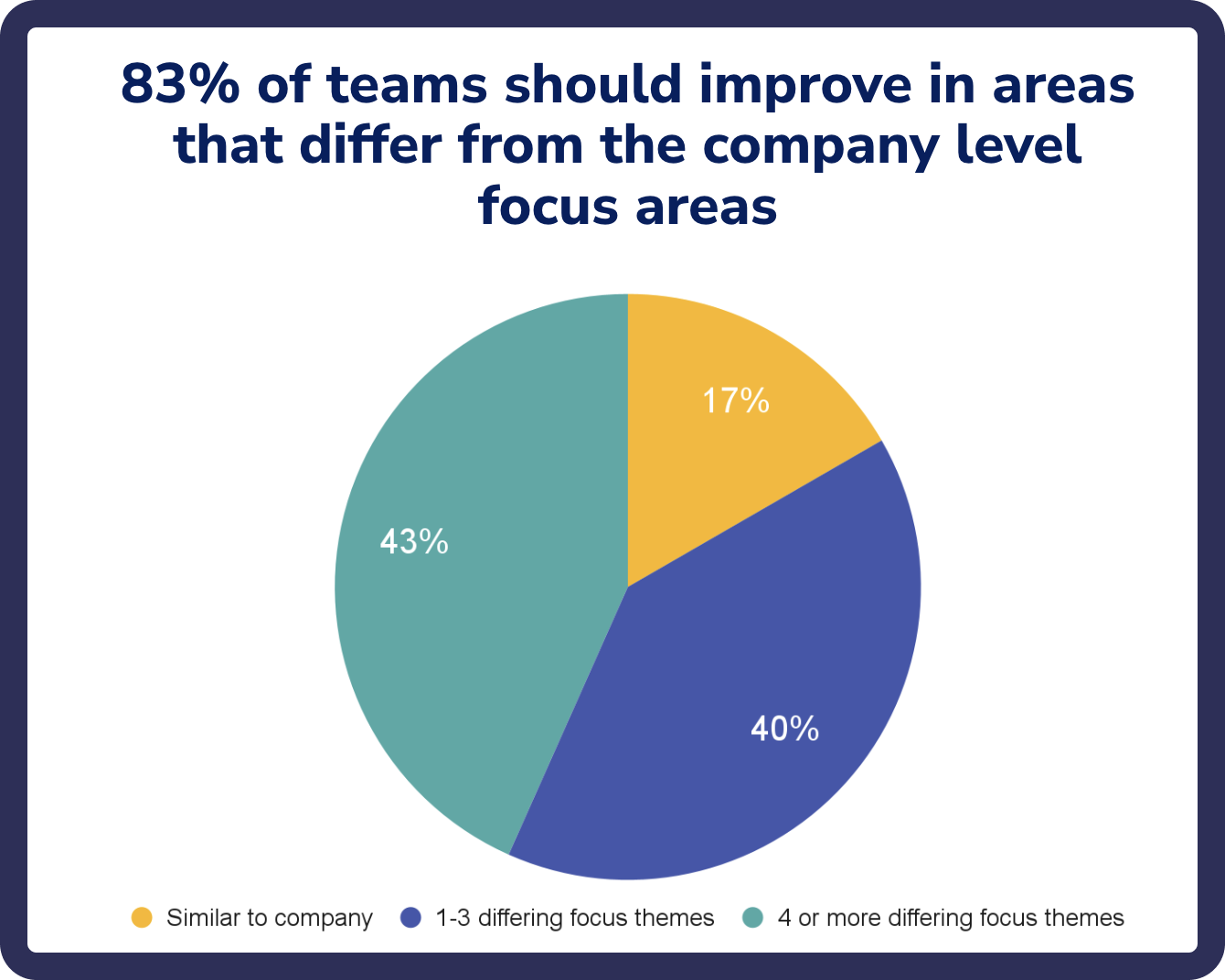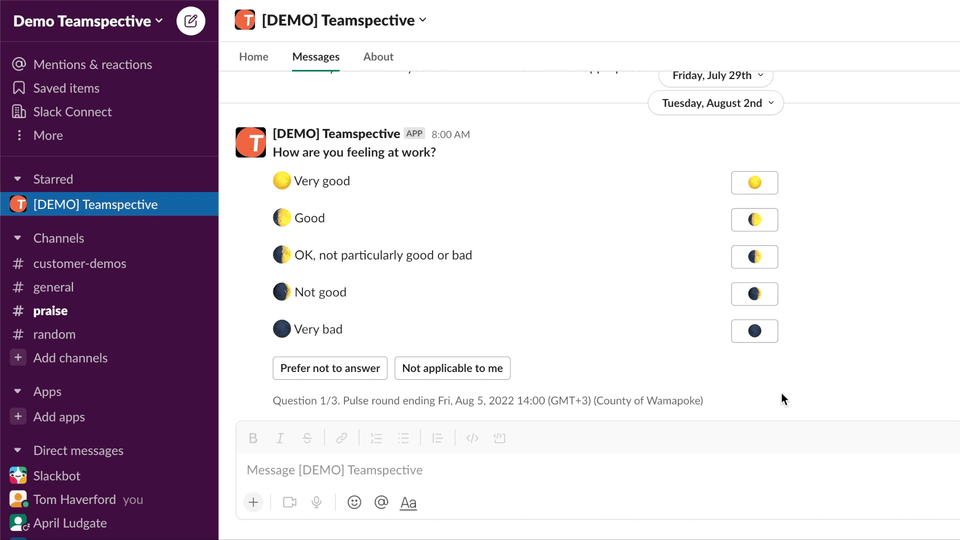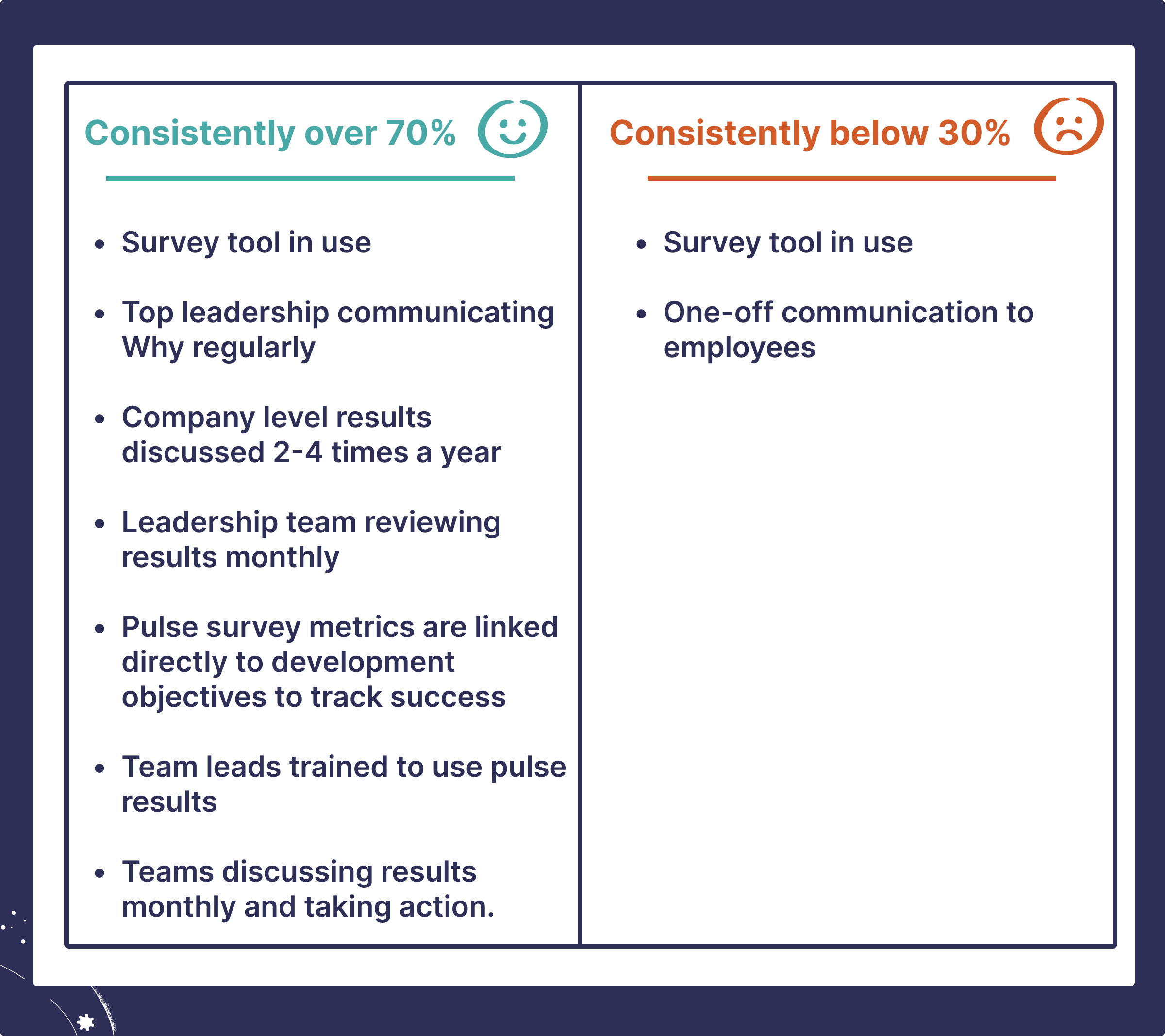The Secret Behind Consistently High Employee Pulse Survey Response Rates
July 10, 2023Learn how to boost response rates for employee pulse surveys by fostering a culture of continuous improvement and implementing real-time measurement of employee experience, engagement, and supportive routines.
Are you wondering how to get consistently high response rates for your employee pulse surveys? The answer lies in taking supportive actions and creating a culture of continuous improvement. In this blog post, we’ll explore why high response rates matter, the secret to creating a culture of continuous improvement, why real-time measuring of employee experience and engagement is beneficial, and how to drive continuous improvement with supportive routines.
Why a High Response Rate Matters
High response rates are critical for good data quality. The more responses you get, the more accurate and representative your data will be. This is especially important for employee pulse surveys, where you want to get an accurate picture of how your employees are feeling and what they need. When you have a high response rate, you know that you’re getting feedback from a large number of employees, and you can be confident that the data is representative of the entire workforce.
Additionally, high response rates can help increase employee engagement and trust in the organization, which can have a positive impact on productivity, retention, and the bottom line. When employees feel that their opinions matter and that their feedback is being heard, they’re more likely to feel engaged and invested in the success of the organization. A low response rate can also be seen as a signal of low engagement.
Finally, make sure to consider what good enough data quality means for your organization. In the case of pulse survey response rates, it rarely adds value to strive for 100% when 70-85% gives you a good enough spread across employees. The smaller your organization the larger the rate should be to ensure that you are hearing opinions from different people.
The Secret: Culture of Continuous Improvement
Creating a culture of continuous improvement is the secret to getting consistently high response rates for your employee pulse surveys. This means establishing a feedback culture where employees feel comfortable providing feedback and leaders encourage and act on feedback. By collecting data through pulse surveys and using supportive actions, education, and training, you can use this valuable tool to make smart decisions and improve the work experience for everyone.
Yes, response rates can be impacted in the short-term via optimizing schedules and keeping the individual surveys short. However, having employees engage with the survey in the long-term requires consistent work day in, day out.
Setting the stage
Start by making it clear to employees that their feedback is valuable and that it will help everyone in the company prioritize improvement actions. This means listening to feedback, responding to it, and taking action to address issues that are identified. When employees see that their feedback is being taken seriously and that changes are being made based on that feedback, they’re more likely to continue providing it in the future.

According to our data, 83% of organization level problems are NOT shared within the individual teams. This means that company level development programs aren’t actually addressing the team level issues. Thus every team needs to be active in discussing the issues they are experiencing and what actions they could take. Leaders play a critical role in creating a culture of continuous improvement but having every employee engage in discussing development ideas is what actually creates the culture.
Tools for setting the stage:
- Communicating the launch of your new process and engagement tool by CEO or management team member.
- Including details of your continuous development practice into an employee handbook article and into your new employee onboarding training or documentation.
- Short Why? explanation whenever you are reviewing results on the company level. This could be:
We track employee experience regularly and results available to everyone to help us solve issues faster. Everyone is expected to share their concerns and improvement ideas.
Always-on measuring and transparent results
Real-time measuring of employee experience is key to driving continuous improvement. With real-time data, you can quickly identify areas for improvement and take action to address them. This means using pulse surveys to collect data on a regular basis and analyzing results regularly. The selected tools should be as lean and automated as possible to ensure that time spent collecting data is minimized.
Real-time data allows you to be more agile in your responses to feedback. When you have access to data in real-time, you can quickly identify emerging trends and take action to address them before they become bigger issues. This can help you stay ahead of the curve and be more proactive in your approach to employee engagement and satisfaction. Results of pulse surveys should be immediately available to everyone in the team, so that anyone can spot a rising problem and propose ideas to fix it. This fosters joint accountability.
Lastly, consider a tool like Teamspective which fully automates the data collection and provides AI generated insights and action suggestions to help teams focus on taking action instead of wasting time deciphering the results. Teamspective’s Pulse Surveys are fully Slack and MS Teams integrated and require only 30 seconds and 6 clicks to answer. Learn more on our upcoming Weekly Webinar and product demo - receive calendar invite by clicking here.

Routines driving actions and improvement
To truly drive the continuous improvement culture, you need routines. These ensure that insights are being reviewed, problems are being discussed and development ideas are being brainstormed on a regular basis. Without routines you are easily caught in a mode where ad hoc opinions or ideas drive your actions which leads to surprises and uncontrolled progress. Take control of your improvement efforts by proactively designing your development process architecture.
Example of development routines:
Make sure you are doing the following activities on a weekly basis:
- Responding to pulse survey
- Asking and giving feedback to colleagues
- Team meeting to discuss progress and barriers
On a monthly basis we recommend organizing a team meeting with agenda covering:
- (tracking the progress development actions)
- new pulse survey insights discussion
- development idea brainstorming
- idea prioritization and assigning ownership
On a quarterly basis it is beneficial to review company-wide initiatives as well as to dive deeper into team-specific ones.
Team level:
- Sharing successes of completed development items
- Retrospectively discussing failed projects
- Considering adjustments to team working agreement
Company level:
- Review of company level results and action programs
Comparing high vs low response rate organizations
We’ve worked with many different organizations and we have seen different levels of response rates over time. This is how high vs low response rate organizations compare:

Final remarks
Involving employees, team leaders, and management in the process of continuous improvement can help ensure that everyone is working together to create a better, more productive workplace. People analytics data provides a foundation for continuous improvement. By reviewing and analyzing the data, companies can identify areas for improvement and take action to address them. And by involving employees in the process, they can ensure that everyone is working together to create a better, more productive workplace.
Teamspective helps you succeed by providing an always on pulse tool which can be interacted with directly in Slack / Teams for best-in-class user experience. AI powered Insights are reported immediately to all teams and individuals so that action can be taken on a regular basis.
Learn more about Teamspective Pulse Surveys: https://teamspective.com/solutions/pulse/
Join Teamspective Weekly Webinar & Product demo: https://hs.teamspective.com/weekly-webinars



